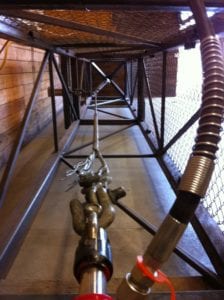Dealing with environmental extremes from hurricanes and cyclones to the heat of Oman and the Canadian cold, WeatherSolve systems have been proven worldwide from Northern BC to New Zealand.
Aerodynamics Research
WeatherSolve Structures conducts ongoing research / testing to determine optimum aerodynamics and safety for each and every situation. This includes working with organizations such as the Midwest Research Institute Global and the Center for Study of Open Source Emissions. We take great pride in creating structures that do what they are supposed to do efficiently and effectively.
Structures can also be adapted to perform additional functions such as security, shade or visual barrier. Maximum effectiveness for each individual function is assured by WeatherSolve computer modeling programs.
Durability Testing

WeatherSolve is continually testing and developing systems to improve durability. As a result, many of our components are unique in the marketplace. This is because off-the-shelf items
either don’t exist or have not been designed to the level of strength we require. WeatherSolve fabrics are wind-tunnel tested for loading and environmentally tested for extremes
in weather. We count on cable strength & fatigue and clip testing equipment to ensure all components perform as they should. One recent cable test required 100,000 load
cycles per test to identify a problem and then design and test the solution. We also visit our structures after major wind storms as part of our standard maintenance program.
Overload Release System
Because poles and foundations represent the most significant portion of structural cost, the WeatherSolve Release System provides added security in extreme storms.
Extensively tested in the 200 mph winds of Hurricane Andrew and many hurricanes since then, WeatherSolve structures allow the fabric connection to be released along the bottom of panels to reduce stress on poles and later re-clipped into place. Fabric at the top of each panel remains connected so as not to present a safety hazard.
Overload-strength & fatigue tested cables are firmly clamped at each pole and securely shackled to the top of each panel so as not to become safety hazard to anyone working near the fence. Additionally, cables can be installed in pairs so that in the unlikely event there was something wrong with one cable and it broke, the other would hold without any backlash or noticeable difference.
Normal operation

